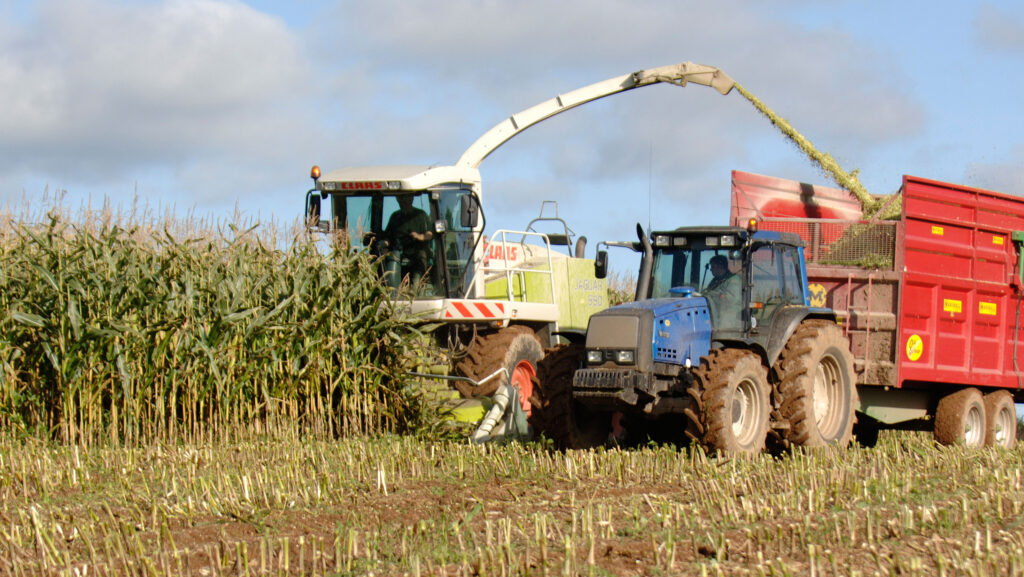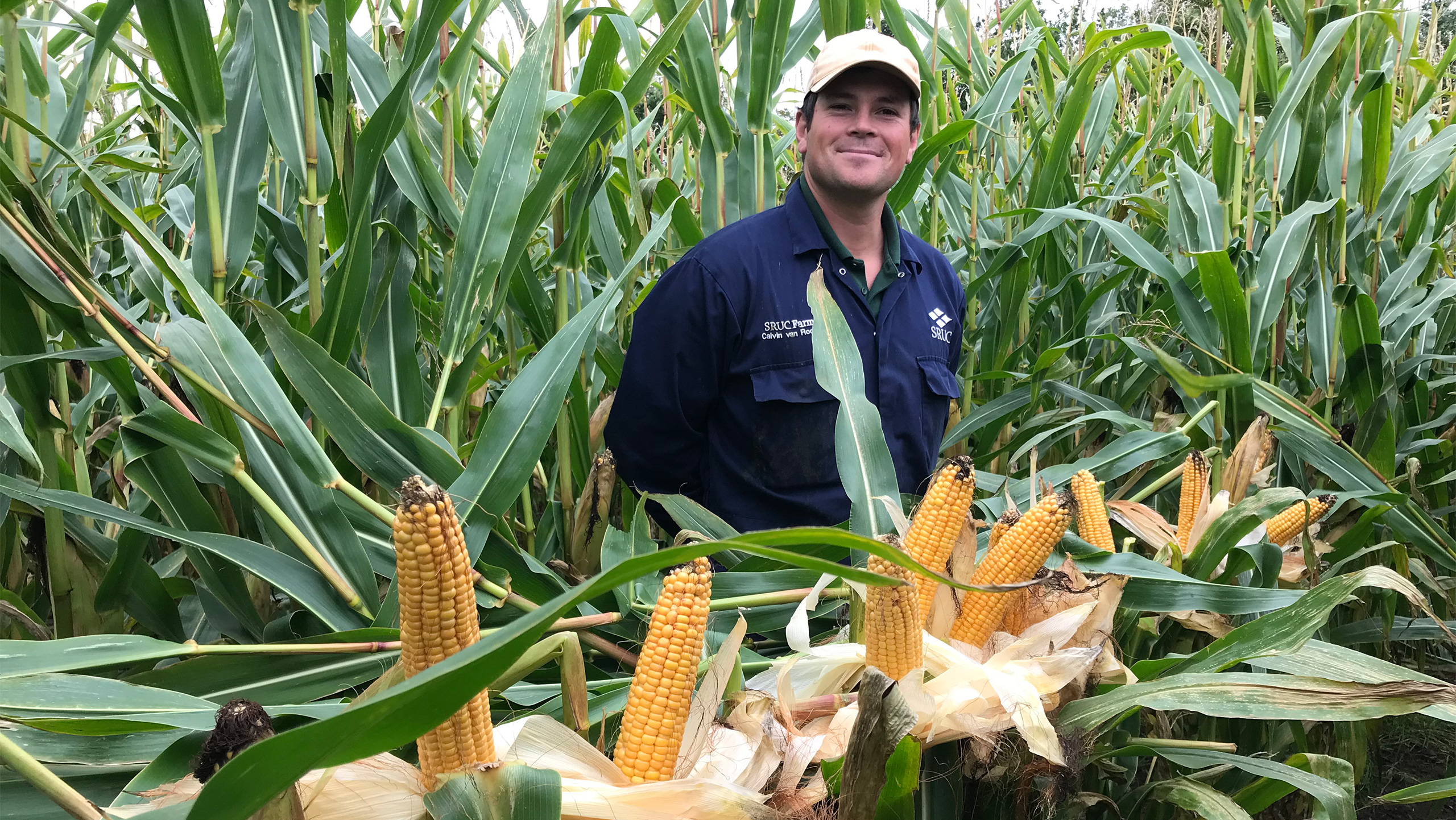Maize Watch: Bigger maize acreage brings results in Devon
 © Farlap/Alamy Stock Photo
© Farlap/Alamy Stock Photo A decision to grow an extra 30ha of maize to swell forage stocks has paid off for Crediton-based autumn block-calver Chris Blake.
Maize makes up 60-65% of the winter silage for his 1,000 Irish Holstein-Friesians and New Zealand Holsteins, which are split across two sites.
Chris opted to grow a total of 150ha of maize and recorded a yield of just over 20t/ha from 70% of this area; the rest averaged 16t/ha. Maize was chopped last week (1-4 October).
See also: Maize Watch: What to do if frost hits before harvest
A decent maize crop, along with grass silage, has brought two years of tight forage supplies to an end, says Chris.
“It ended up being a really good yield and we were pleased with it. June wasn’t a great month, it was cold, but then we got moisture in July and it flew,” he explains.
“We have missed a lot of rain here in mid-Devon this summer, which suited maize. We weren’t as late harvesting it as I thought.
“We can be as early as 20 September and the latest we have harvested is mid-October, so it was about average.”
Myrdal, Lovely and Faith were the three varieties of choice this year. Much of the farm is red, sandy loam.
“Faith was drilled in the heavier parts of the farm because it is an early-maturing variety.
“Most of it was about 32% dry matter when it came in. About 15ha of it was a bit green, but it was going in the clamp with some drier stuff and we wanted to get it in, rather than wait a week or two for dry matters to rise – we took it a bit early.”
Maize is either followed with wheat on rented arable ground, or drilled with Westerwolds the following day, used for spring grazing by youngstock in March and April. It is then ready for another maize crop in May, explains Chris.
Maize Watch crop progress as of 9 October |
|||||
|
Site |
Drill date |
Altitude (m) |
Crop dry matter t/ha on 24 September |
Crop dry matter t/ha on 1 October |
Increase from last week % |
|
Petworth, Sussex |
7 May |
50 |
Harvested |
|
|
|
Harleston, Norfolk |
18 May |
30 |
Harvested |
|
|
|
Crediton, Devon |
14 May |
118 |
30.3 |
Harvested |
|
|
Ticknall, Derbyshire |
6 June |
67 |
22.5 |
25.3 |
+ 2.8 |
|
Narbeth, S Wales |
12 May |
32 |
18.4 |
20.9 |
+ 2.5 |
|
SRUC, Dumfries, Scotland SAMCO Film |
24 April |
45 |
25.6 |
28.2 |
+ 2.6 |
|
SRUC, Dumfries, Scotland Conventional |
10 May |
45 |
20.2 |
21.8 |
+ 1.6 |
|
Notes: Variety Faith; variety under film Palladium Source: Neil Groom, Grainseed |
|||||
Views from the field
Neil Groom, manager of forage specialist Grainseed, reports from field, with the following recommendations:
- Be ready with the drill after harvest. Wheat or grazing rye drilled immediately after will help prevent soil losses and help you use fertility in the field.
- If not drilling the following crop, use a tine to rip the stubble so that rainfall soaks in, reducing the amount of water run-off
- Corn borer reports in the South and South West are increasing due to milder winters. Look out for minor damage in cobs and some stalk lodging where the larvae exit the stem
- A hard winter would be a good control for all field pests, but growers on the continent concerned with corn borers use stump grinders to smash the bottom of plants up before the field is ploughed. This is to reduce overwintering habitat for the larvae.
Film working in Dumfriesshire
At Scotland’s Rural College’s Crichton Royal Farms, in Dumfries, Calvin van Rooyen is seeing the benefit of growing maize under film.
“We have 70ha of maize in total, half under film and half grown conventionally as we are close to the coast and the Gulf Stream effect,” says Calvin.

Calvin van Rooyen © Neil Groom
“The fields under film are 10 days away from harvest and have good solid starch in them.
“The conventionally grown fields have milky starch and will be left until the end of the month to maximise the starch we harvest.
“One field down by the river has been frosted on top of the plant, so we will cut this first and put it in the bottom of the clamp.
“It will have plenty of weight on top as it’s harder to roll when silage is high in dry matter”.
